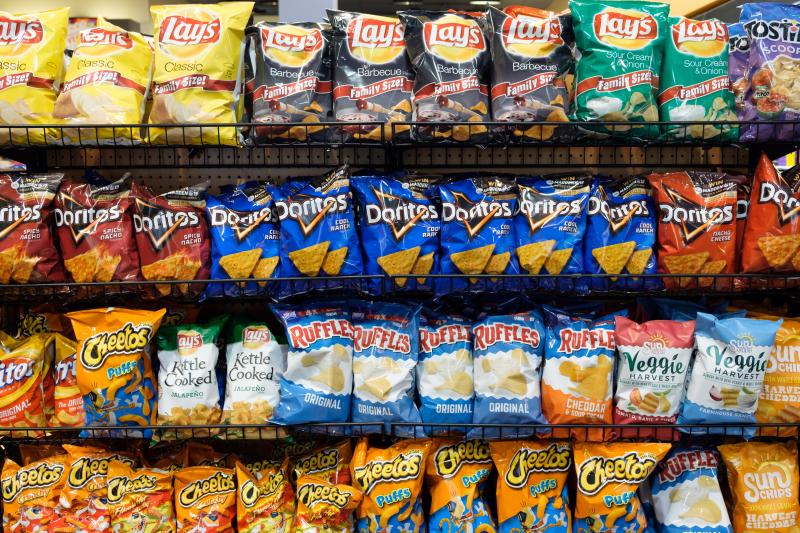Osea Giuntella, Matthias Rieger & Lorenzo Rotunno, 2020, Journal of International Economics, 122 (C).
THE RESEARCH PROGRAM
The obesity epidemic has traditionally been associated with the Western world - think of sugary drinks, fast foods and processed foods. But this conventional wisdom is passé. The Global South is in the midst of a health and nutrition transition. While communicable diseases and undernutrition are on a (slow) decline, non-communicable diseases and overnutrition are rapidly gaining ground: for instance, overweight rates have tripled in the developing world since the 1980s.
What are the main determinants of this surge in obesity? One possibly important driver is globalization and the international integration of food markets. Developing countries account today for about half of world imports, up from 30% in 1980. These concomitant trends (greater exposure to international markets and increasing prevalence of obesity) are making scholars and policy-makers more alert to the implications of international trade for health and diets. But despite the perceived association between trade liberalization and diet-related health outcomes, the causal effects of trade in foods on obesity, and their scale, are not well established. In a current strand of my research, I aim to fill this gap by investigating the effects of trade integration in the food sector on nutrition and obesity prevalence.

PAPER’S CONTRIBUTIONS
Osea Giuntella, Matthias Rieger and I look at the case of Mexico and its trade with the US. Mexico has become a prime example of a country in the nutrition transition. In our sample of adult women aged between 20 and 49, obesity prevalence rose from 10 to 35% between 1988 and 2012. At the same time, trade between the US and Mexico was also booming, especially in the food and beverages (F&B) industry. US F&B products represented around 75% of total Mexican imports and 8% of Mexican households’ food expenditure in 2012, up from 2% in 1989. In our descriptive analysis, we find that most of this increase is due to foods typically considered unhealthy (e.g. food preparations). The twin increases in obesity rates and prevalence of US foods raise the following question: has the US ‘exported’ its obesity prevalence (the highest among OECD countries) to Mexico through trade in foods?
In our empirical analysis, we assess the causal effect of this increase in (unhealthy) US food export supply on obesity within Mexico. We combine anthropometric data from four health surveys in 1988, 1999, 2006 and 2012 to compute obesity prevalence among our sample of adult women (men were not included in the first two waves). Changes in individual food product imports from the US are allocated to Mexican states according to each product’s share of total household expenditure. To identify causal effects, state-level exposure to US foods is instrumented by US food exports to countries other than Mexico. This illustrates the evolution of US comparative advantage and market access in third countries - and not of food demand in Mexico.
The results show a positive and robust effect of US food exports on obesity prevalence across Mexican states. The supply-driven rise in US food exports to Mexico can explain around 10% of the increase in obesity prevalence among Mexican adult women observed between 1988 and 2012. The magnitude of the estimated impact is important and comparable to that of other socioeconomic determinants of obesity. These effects are robust to a number of sensitivity checks (e.g., controlling for non-food imports from the US and for the presence of malls and supermarket chains like Walmart), are specific to food imports from the US, and are strongly driven by US exports of unhealthy foods. We also provide evidence that there is a significant price channel behind the obesity-promoting effect of US foods. Using Mexican micro price data, we find that greater exposure to import competition from the US leads to lower relative food prices. The outward shift in food supply due to greater integration with the US caused food prices to decline relative to non-food prices (with a more pronounced relative decline for unhealthy foods), thus increasing food consumption and body weight.
FUTURE RESEARCH
The findings point to negative health externalities stemming from greater exposure to imported (and relatively unhealthy) foods. The paper, however, lacks a quantitative assessment of these externalities (e.g., effects on the labour market prospects of obese people, and health expenditures involved in treating obesity-related health conditions). An evaluation of the overall welfare effects of increased food imports would also require comparing these negative externalities with the standard consumers’ gains from trade (e.g., access to greater variety of foods).
Furthermore, while our study identifies the obesity effect of food imports alone, greater import competition even in non-food sectors can also affect food consumption through income effects. We control for this influence on the effect of food imports in the paper, but do not attempt to quantify the importance of this additional channel. Future research might usefully shed light on these issues.
© Photo by Kenishirotie on Adobe Stock
→ This article was issued in AMSE Newletter, Fall 2020.